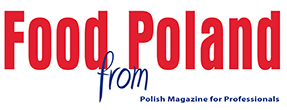The survey shows that the company collected more than 100,000 promotional brochures in the period under consideration. The most, comprising more than 80% of all monitored titles, included food offers. The number of grocery brochures largely exceeded the number of publications from other market segments in each country under analysis. Over the first three quarters of 2018, the most brochures released by drugstores were collected in Montenegro and the Netherlands, brochures by electronic store chains – in Switzerland and Slovenia, while DIY store publications – in Belgium.
The report has shown that the most brochures were monitored in Poland. The brochures were released frequently and in large numbers, and the quantity of the promotional articles published therein exceeded four million for the entire period under consideration. Most of the brochures were dedicated to grocery promotions, while electronic store brochures came second. The following places, by number of brochures, were occupied by Italy and Austria, however, each of these states recorded half as many publications annually as Poland. An average of more than one hundred brochures per week were published in these three countries in the analyzed period of 2018, but only Poland exceeded the limit of one hundred the year before.
The survey also included trade chains whose publications were monitored in large numbers. The top included German corporations, such as the REWE Group, owning stores in many European countries. Many brochures were also issued by the Schwarz Group which may boast such brands as Lidl and Kaufland. Other high positions were occupied by Spar Group, Coop and Metro. In Poland, accounting for the largest amount of brochures, we find such publishers as Lidl, Carrefour, Auchan or E. Leclerc.
The future of promotional brochures is an interesting question. Just as the traditional paper press is prophesied to fade away, printed brochures are anticipated to soon be replaced by digital publications. Unquestionably, easy access to promotional offers on the Internet is hard to overestimate. However, the survey by FOCUS Research International has shown that paper editions accounted for as much as 90% of all monitored brochures in the analyzed period of 2017, while their percentage for the surveyed period of the following year was only 3% lower! A vast majority were issued in the convenient A4 format. The less popular A3 format was mostly recorded in Austria and Slovenia.
Why is it worth examining promotional brochures? In spite of the development of technologies and social media marketing, the enormous circulation of paper brochures shows that trade chains continue to bet on this channel of customer communication. The strength of brochures is their simple and brief way in communicating information on prices and promotions. They show specific items from the available assortment at a given store, which makes it easier to plan one’s shopping. Since consumers often reach for trade brochures, it is worth ensuring that the advertised goods and brands be presented in an interesting and unusual way. This will make their names remembered, and more people will be able to take advantage of the offers. The clearer and more visually attractive a paper promotional brochure will be, the higher its chance to beat digital media in the struggle for the customer’s attention.
Agnieszka Smarzewska
FOCUS Research International












